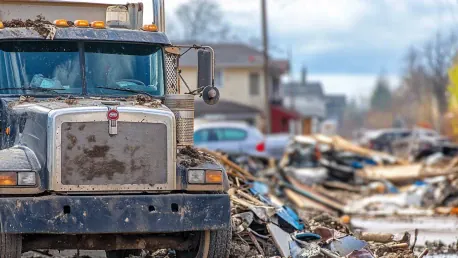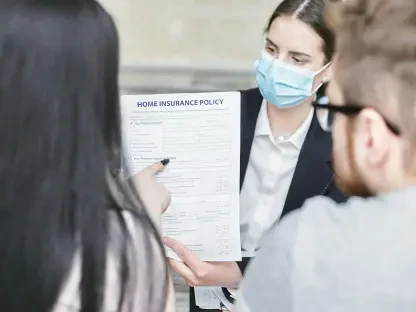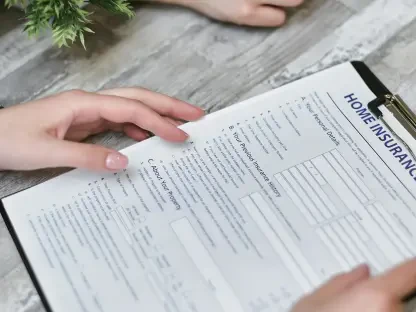Natural disasters are unpredictable and can cause significant damage to homes and properties. Being prepared is crucial for minimizing the impact on your family and property. This article provides essential tips on disaster preparedness, understanding insurance policies, and accessing recovery aid. Recent events, such as the California wildfires, underscore the importance of being well-prepared for sudden disasters. While daunting, preparation can alleviate much of the stress and facilitate a smoother recovery process after a disaster strikes.
Importance of Safety and Evacuation
Safety should always be the top priority during a natural disaster. If faced with an imminent threat, such as wildfires or hurricanes, it is crucial to prioritize the evacuation of your family to a safe location. Local officials will provide guidance on when it is safe to return to your home. Evacuating promptly can prevent unnecessary risk and keep your loved ones safe from harm. Upon receiving the all-clear from local authorities, returning home needs careful planning and ample preparation.
Upon returning, ensure you are well-prepared with ample supplies and protective gear. This will help you safely assess the state of your property and begin the recovery process. It is important to have gloves, masks, and sturdy shoes as you may encounter hazardous conditions. Remember, your safety and that of your family members come first. Taking the proper precautions can help avoid injuries and allow you to methodically address any damage sustained during the disaster.
Thorough Documentation of Damage
Before making any repairs, it is essential to document the damage thoroughly. Take clear photos and videos of all affected areas and items. This documentation is crucial for filing an insurance claim and ensuring you receive the appropriate compensation. The more detailed your documentation, the stronger your case will be when seeking compensation for damages. A comprehensive record allows insurance adjusters to accurately assess the extent of the damage and approve sufficient funds for repairs.
Waiting for an insurance adjuster to assess the damage before making repairs is also important. This step ensures that your insurance coverage remains valid and that you do not inadvertently void your policy. Making alterations or repairs prematurely can compromise your insurance claim. By waiting for the adjuster’s assessment, you will have a clearer understanding of what costs will be covered and can proceed with confidence, knowing that your actions align with policy requirements.
Understanding Insurance Policies
Understanding the specifics of your insurance policy is vital for effective disaster preparedness. Standard homeowner’s insurance policies typically do not cover flood damage, so it is important to review your coverage and consider obtaining additional riders or separate policies for comprehensive protection. Being informed about what your policy covers can prevent unexpected financial burdens should a disaster occur. For instance, those in flood-prone areas should seriously consider flood insurance, while those in seismic zones should look into earthquake coverage.
Inform your insurance agent or company about the damage as soon as possible and acquire your claim number. This number is essential for tracking the status of your claim and ensuring a smooth process. Prompt notification allows your insurance company to initiate the claims process quickly, reducing delays in receiving funds for necessary repairs. Knowing your policy inside out and being proactive in communicating with your insurer can streamline the recovery process and ensure you maximize your coverage benefits.
The Role of FEMA and Other Organizations
FEMA (Federal Emergency Management Agency) plays a critical role in providing support after a disaster. They offer various types of assistance, including temporary housing, home repairs, and replacement of lost personal property. Homeowners should apply for FEMA disaster recovery funds through their website or by phone, ensuring they have all necessary documentation ready. This makes the application process smoother and increases the likelihood of receiving aid promptly.
Local governments and non-profit organizations like the American Red Cross also provide immediate support. These resources often include access to basic necessities such as water, food, and shelter. Community-based and faith-based organizations can also be effective sources of aid. Leveraging these resources can significantly aid in the recovery process, offering immediate relief and support to mitigate the disaster’s impact. Reaching out to available assistance programs can provide a safety net during challenging times.
Proactive Measures for Disaster Preparedness
Being proactive is a pivotal strategy in disaster preparedness. Homeowners in potential disaster zones should review their insurance policies to confirm they include relevant coverage types, such as windstorm, flooding, and earthquake insurance. An annual review of your policy can help identify any gaps in coverage and ensure you are adequately protected. Adjustments to your policy, based on evolving risks and property changes, can fortify your resilience against natural disasters.
Documenting the condition of your property and possessions while they are in good condition is also essential. This proactive documentation can significantly expedite the insurance claims process and ensure you receive the appropriate compensation for any damage. Maintaining an up-to-date inventory of your belongings, complete with photos and descriptions, can simplify the process of proving ownership and value to your insurer. Proactive measures not only offer peace of mind but can also make a critical difference in the aftermath of a disaster.
Expert Advice on Handling Insurance Claims
George Hooker, an insurance claims defense attorney, provides expert advice on handling insurance claims. He emphasizes the importance of informing your insurance agent or company about the damage as soon as possible and acquiring your claim number. This number is vital for tracking the status of your claim. According to Hooker, clear communication with your insurer is key to a smooth claims process, ensuring you keep track of all necessary steps and updates.
Hooker also highlights the critical step of waiting for an insurance adjuster to assess the damage before making any repairs. This ensures the validity of your insurance coverage and helps you receive the appropriate compensation for repairs. By adhering to the adjuster’s timeline, homeowners can avoid jeopardizing their claims and ensure compliance with policy guidelines. Following expert advice can optimize your claims experience and contribute to an efficient recovery process.
Leveraging Community Resources
In addition to FEMA, local governments, and non-profit organizations, community-based and faith-based organizations can provide valuable support. These organizations often offer access to basic necessities such as water, food, and shelter, helping individuals and families recover more quickly. Their outreach programs can provide not only physical resources but also emotional and mental support during times of crisis, fostering a sense of community and shared resilience.
Leveraging these resources can make a significant difference in the recovery process. Homeowners are encouraged to reach out to these organizations for assistance and support in the aftermath of a disaster. Engaging with community resources can bridge gaps in aid and accelerate recovery, ensuring that no individual or family faces disaster recovery alone. The sense of solidarity and mutual aid within the community can be a source of strength during challenging times.
Reviewing and Updating Insurance Policies
Natural disasters are unpredictable and can cause immense damage to homes and properties. Preparing for these events is crucial to reduce their impact on your family and belongings. This article offers important tips on disaster preparedness, understanding insurance policies, and obtaining recovery assistance. Recent catastrophes, such as the California wildfires, highlight the necessity of being well-equipped for unexpected disasters. Although preparation might seem overwhelming, it can significantly reduce stress and enable a smoother recovery after a disaster hits. Additionally, it’s vital to create an emergency plan that includes evacuation routes, communication methods, and a checklist of emergency supplies. Understanding your insurance coverage and knowing how to access federal and local aid programs can also expedite the recovery process. Being proactive not only protects your home and property but also ensures your family’s safety and peace of mind during challenging times. Planning ahead is the key to resilience and smoother recovery when faced with nature’s unpredictability.









